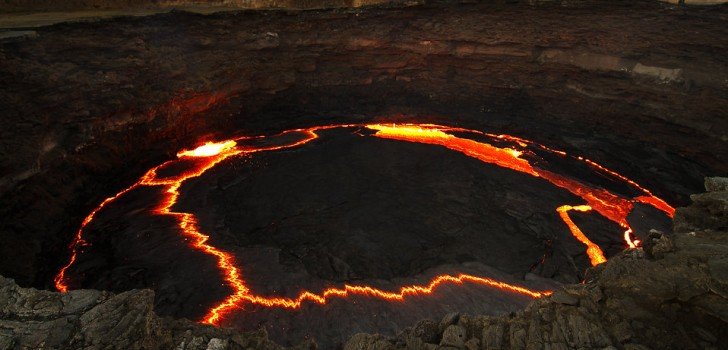Scientists recently realized that what they had thought were several small unrelated chains of volcanoes in Australia is actually one giant connection that is 1,240 miles long.
This chain is now considered to be the world’s largest chain of volcanoes.
Researcher of seismology and mathematical geophysics at Australian National University, Dr Rhodri Davies, along with his colleagues, plan to present evidence for what they are calling “Earth’s longest continental hotspot track” in a new study.
Although hotspots are not usually associated with the boundaries of tectonic plates, they are able to form above “mantle plumes” that begin at the boundary of Earth’s mantle and core.
The scientists were aware of four different tracks of past volcanic activity in eastern Australia. However, they were unaware that they were linked together, sharing a common mantle plume that has melted the Earth’s crust for millions of years.
The team examined past data and combined it with a study of the age of elements found within Australian minerals in order to create a model of Australia’s tectonic plate. The team discovered that the reason that sections of the volcanic track don’t have usual volcanic activity is because the continent of Australia is too thick to enable the hot rock located within the mantle plumes to rise close enough to the surface of the Earth for it to melt and create magma.
The team was able to uncover that volcanic activity is created in sections of the Earth where the outer layer, also known as the lithosphere, is thinner than 81 miles.
A mineral known as leucitite led the scientists to thin spots that are prone to volcanic activity. This showed scientists that the chains of volcanoes had actually been one giant chain the entire time.
The new giant track of volcanoes has been named the Cosgrove Volcano Track. It is the largest known track of volcanoes in the entire world.
The scientists are hopeful that they will be able to use their newly discovered information to understand the geological record of Australia more clearly.
Stay Connected